Categories
Hot Products
pda android Barcode Scanner pda with rugged android smart terminal 2d barcode scanner pda14.0 handheld pda device model:HT518-F20 Android14 touch screen 4GB+64GB 5.45inch More
pos Android 5.5 Inch Android 13 NFC 1D 2D scanner Handheld pos Terminal 58mm Printer POS 3GB+16GB model:NB55 4G/3G/GPRS Android 13 5MP camera 5.5inch 3GB+16GB More
5.0 Inch Android 11 NFC 1D 2D Code Handheld Terminal Printer POS model:H8 4G/3G/GPRS Android 11 5MP camera 5.0inch More
Android14.0 Rugged Pda android Barcode Scanner pda handheld uhf rfid reader pdas scanner android pda model: HT518D-F7 Android 14.0 physical keypad 4GB+64GB 4inch More
android 12 Barcode Scanner pda with Reader 1D/2D scanner Android handheld pda device model:HT518-V350 Android12 3GB RAM + 32GB ROM 3.5nch More
4G Smart hard hat with Camera Live streaming camera for construction model:M3702-02A 4G/call/position/Hazard Alert/camera More
Android 14.0 Handheld pda 5.45inch PDA UHF RFID Reader scanner 21m Long Range rfid scanner Model:R20 4GB+64GB Android 14.0 Touch screen 5.45inch More
pda android scanner handheld rfid reader Android 12.0 Fingerprint Touch screen 5 inch Handheld pda barcode scanner android PDA handheld rfid reader price model:HT518-R7 Android 12.0 Zebra SE4710 5inch RAM 4GB+ROM64GB More
Our enquiry
Introduction: In today's fast-paced retail and hospitality sectors, efficiency isn't just a goal—it's a necessity. The M8 Intelligent Handheld Terminal emerges as a powerful, all-in-one solution designed to streamline operations, enhance customer service, and boost profitability. This in-depth review explores why the M8, with its integrated printer and robust Android system, is revolutionizing mobile business management. 1. Powerful Performance: The Engine for Efficiency At its core, the M8 is built for speed and reliability. Powered by the MT6765 Octa-core 2.3GHz processor and the latest Android 14/15 operating system, it delivers: Seamless Multitasking: Switch between apps, scan codes, and print receipts without lag. Superior Compatibility: Run any mainstream business application, from POS software to management systems, without compatibility issues. Future-Proof Security: The latest Android OS ensures long-term software support and enhanced security for your business data. Paired with flexible memory options of 3GB/4GB RAM and 32GB/64GB ROM, the M8 effortlessly handles complex tasks and large datasets. 2. All-in-One Design: Consolidating Your Workflow The M8's standout feature is its integrated "All-in-One" design, which eliminates the need for multiple separate devices. 8-Inch High-Definition Screen: Offers a clear, vibrant display for easy menu browsing and smooth touch operation. Built-in 80mm High-Speed Thermal Printer: This is a game-changer. Print receipts, orders, or tickets on the spot—directly from the device. This "scan-and-print" functionality can cut order processing time by half. Versatile Scanning (Optional): Equip it with a 1D/2D barcode scanner to instantly read product codes and payment QR codes with pinpoint accuracy. 3. Uninterrupted Connectivity & All-Day Battery Life For mobile operations, constant connectivity and power are non-negotiable. 4G LTE Full Netcom: Stay online anywhere with support for 4G, dual-band Wi-Fi, and Bluetooth 5.0. Massive 5000mAh Battery: Engineered for all-day intensive use, empowering your staff without constant recharging. Fast Type-C Charging: Get back to full power quickly during short breaks. 4. Versatile Application Scenarios The M8 is a versatile tool adaptable to numerous industries: Restaurant QR Code Ordering: Servers can take and send orders directly to the kitchen printer tableside, improving turnover. Retail Mobile Checkout: Ring up sales, check prices, and accept payments anywhere in the store, reducing queue times. Takeout and Delivery Management: Receive and print orders from multiple platforms directly, minimizing errors. Parking Fee Collection: Issue printed tickets and accept payments on the move for professional management. Logistics and Warehousing: Accelerate inventory counts and goods management with rapid barcode scanning. 5. Customizable Options for Your Unique Needs Tailor the M8 t...
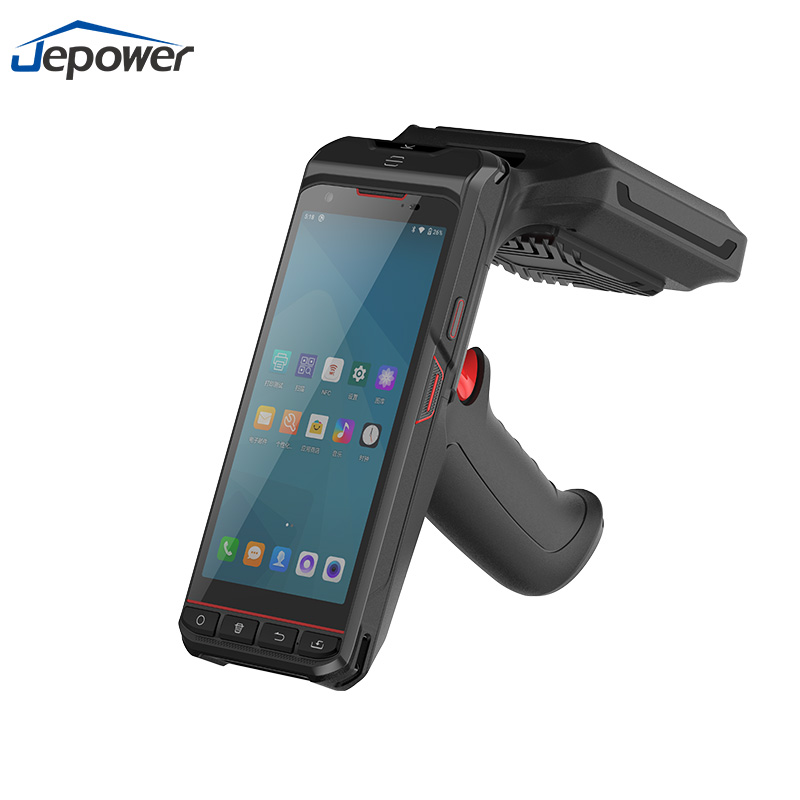
What Is UHF RFID Technology? Ultra-High Frequency (UHF) RFID operates between 860–960 MHz and allows long-distance, high-speed data transmission. With RFID tags attached to products or pallets, information can be read instantly by a UHF RFID handheld terminal or fixed reader, without direct line-of-sight. This means operators can identify hundreds of items within seconds, improving both speed and accuracy compared with barcode scanning. 2. Benefits of UHF RFID in Warehouse Management ✅ Real-Time Inventory Tracking RFID enables automatic data updates as goods move in and out of the warehouse, reducing manual counting and human error. ✅ Improved Operational Efficiency Warehouse staff can scan entire shelves or pallets in one sweep using Jepower R501 UHF handheld terminals, drastically cutting down labor time. ✅ Enhanced Accuracy and Visibility Every tag carries a unique ID, allowing complete visibility of each item’s location and movement — essential for preventing loss or misplacement. ✅ Data Integration and Cloud Connectivity Jepower’s Android-based RFID devices sync seamlessly with warehouse management systems (WMS), enabling real-time monitoring and intelligent data analytics. 3. Application Scenarios UHF RFID technology is widely applied in: Inventory and Asset Tracking — Automates item counting and movement logging. Logistics and Distribution Centers — Enhances inbound/outbound scanning efficiency. Manufacturing Lines — Tracks components, tools, and materials during production. Retail Warehousing — Supports accurate stock management and replenishment planning. 4. Jepower’s RFID Handheld Solutions Jepower provides a range of industrial-grade UHF RFID handheld terminals designed for durability, connectivity, and performance. The Jepower R501, for example, features: Reading distance up to 20 meters Support for 1D/2D barcode scanning Android 13 OS and high-performance octa-core CPU 4G/Wi-Fi/Bluetooth communication for data synchronization These features make it ideal for warehouse, logistics, and asset management applications. Conclusion UHF RFID technology empowers businesses with automation, transparency, and efficiency in warehouse operations. By adopting Jepower’s R501 UHF handheld terminals, companies can modernize their inventory management systems and stay competitive in the digital logistics era.
In today’s fast-paced industrial environment, businesses require reliable and efficient tools to handle data collection, inventory management, and field operations. One of the most essential tools in this process is the industrial handheld terminal — a rugged PDA that integrates computing, scanning, and communication capabilities. Choosing the right device can significantly improve productivity and accuracy. Here are key factors to consider when selecting the best industrial handheld terminal for your business. 1. Ruggedness and Durability Industrial environments can be harsh, involving dust, water, and impact risks. When choosing a handheld terminal, look for devices with IP65 or higher protection ratings and drop resistance of at least 1.2 meters. Jepower’s rugged terminals are designed for durability, ensuring stable performance even in challenging conditions. 2. Scanning Performance Barcode scanning is at the heart of industrial data collection. Choose a PDA equipped with a high-speed 1D/2D barcode scanner or even UHF RFID capability for long-range identification. Jepower offers models such as the R20 UHF handheld terminal, supporting fast and accurate reading of tags from up to 20 meters away. 3. Operating System and Performance A smooth, user-friendly operating system is essential for productivity. Android-based terminals with high-performance octa-core processors and sufficient memory (4GB+ RAM) allow seamless multitasking and software integration. Jepower’s handheld PDAs run on Android 13, compatible with most enterprise applications. 4. Connectivity Options Stable communication is critical for real-time data transmission. Look for devices that support 4G/5G networks, Wi-Fi, Bluetooth, and GPS. Jepower handheld terminals ensure uninterrupted data exchange, ideal for warehouse logistics, delivery tracking, and field service operations. 5. Battery Life and User Convenience Long-lasting battery power ensures continuous operation throughout the workday. Jepower PDAs are built with large-capacity batteries and fast-charging technology, keeping your workforce productive without frequent recharging. 6. After-Sales Support and Customization A reliable supplier should offer technical support, software customization, and after-sales service. Jepower provides complete OEM/ODM services, helping enterprises tailor their devices for unique workflows and industry needs. Conclusion Selecting the right industrial handheld terminal means balancing durability, performance, and connectivity to fit your specific business scenario. Jepower’s range of rugged PDAs combines intelligent design with industrial-grade reliability — empowering logistics, warehousing, retail, and field operations with smarter mobility solutions.
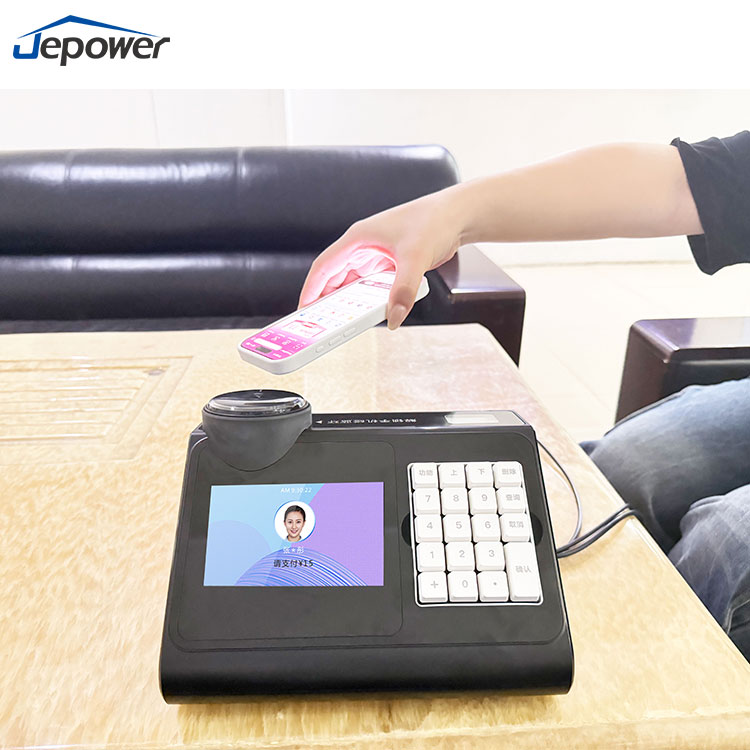
In today’s fast-paced dining industry, speed, accuracy, and customer experience are key to success. Traditional cash registers are no longer enough—restaurants now rely on smart Android POS terminals to handle payments, manage orders, and connect with cloud-based systems. These intelligent devices combine touchscreen operation, multiple payment options, and powerful software to help restaurants run more efficiently and deliver a seamless dining experience. What is a Smart POS Terminal? A smart POS terminal is an all-in-one device that integrates hardware and software to process various payment types—such as card, QR code, NFC, and facial recognition—while managing orders and data in real time. Unlike traditional POS systems, Android-based smart POS terminals provide: Faster processing speed Wireless connectivity (Wi-Fi/4G/5G) Built-in barcode/QR scanners and receipt printers User-friendly Android interface Integration with restaurant management software These devices can be used both at the cashier counter and for table-side ordering, ensuring smooth and efficient service throughout the restaurant. How Smart POS Terminals Transform Restaurant Operations Smart POS devices simplify every step of restaurant management—from order taking to payment and analytics. 1. Faster Order Processing Waiters can take orders directly on the device, sending them instantly to the kitchen display system, reducing errors and waiting time. 2. Multiple Payment Methods Customers can pay via credit card, QR code, e-wallet, or contactless payment—meeting the expectations of modern diners and speeding up checkout. 3. Real-time Data Sync All transactions and sales data are uploaded to the cloud, allowing managers to track revenue, inventory, and popular dishes anytime. 4. Enhanced Customer Experience Quick payments, accurate billing, and personalized service create a smoother dining journey and encourage repeat visits. Key Features of Jepower Android POS Devices Jepower’s Android POS terminals are designed to meet the demands of busy restaurant environments. They integrate multiple functions in one compact, stable, and elegant system. Main features: Android operating system for flexible software compatibility 5.5-inch to 15.6-inch touchscreen options Built-in 58mm thermal printer for instant receipts Card, QR, NFC, and face recognition payment support High-speed processor and long battery life Stable network connectivity (Wi-Fi, 4G, Bluetooth) These POS terminals are ideal for canteens, cafés, fast-food chains, and fine dining restaurants that need efficiency and modern management tools. H2: Application Scenarios in the Restaurant Industry Application Use Case Benefits Canteens & School Restaurants Fast card/QR payment + subsidy management Simplified checkout, reduced cash handling Fast Food Chains Self-service ordering kiosks Lower labor costs, shorter queues Cafés & Bakeries Mobile handheld POS for flexible checkout Increase table turnover rate Fine Dining Table-s...

What is an Android PDA and How Does It Work? In the era of digital transformation, businesses across logistics, retail, manufacturing, and field services are rapidly adopting Android PDAs (Personal Digital Assistants) to improve efficiency, data accuracy, and mobility. An Android PDA is more than just a handheld device—it’s a smart industrial tool that combines barcode scanning, RFID reading, wireless communication, and real-time data transmission in one compact terminal. What is an Android PDA? An Android PDA is a handheld mobile computer powered by the Android operating system. It is designed for enterprise and industrial environments where workers need to collect, process, and transmit data on the go. Unlike consumer smartphones, industrial PDAs are built with rugged materials, high-performance processors, and professional data-capture modules to ensure reliable operation even in harsh conditions. Key features include: Android OS for flexible software development and app compatibility 1D/2D barcode scanning for fast product identification NFC or RFID reading for asset and inventory tracking Wi-Fi, 4G/5G, Bluetooth, and GPS connectivity Large-capacity battery for all-day performance Rugged design (IP65/IP67-rated) for dust and water resistance How Does an Android PDA Work? An Android PDA works by integrating data collection hardware with mobile business software. When a user scans a barcode or RFID tag, the device captures the information and instantly sends it to the company’s management system via wireless connection. This real-time synchronization eliminates manual data entry, reduces human errors, and accelerates workflow efficiency. Typical working process: Data Capture: Scan barcodes, RFID tags, or input information manually. Data Processing: The PDA’s built-in app validates and stores the information. Data Transmission: Information is uploaded to cloud or ERP systems via Wi-Fi/4G. Feedback Loop: Managers can track progress, update instructions, and analyze reports remotely. Key Advantages of Using Android PDAs Improved Efficiency: Workers can collect data faster and more accurately, reducing paperwork and manual entry. Mobility and Flexibility: Android PDAs are lightweight and wireless, making them ideal for mobile operations in warehouses, stores, or outdoor sites. Customization: Businesses can easily install custom Android apps to suit their operational needs—inventory control, order tracking, inspection reports, and more. Durability: Designed for industrial use, rugged PDAs can withstand drops, dust, humidity, and extreme temperatures. Integration with Enterprise Systems: Seamlessly connects with ERP, WMS, POS, and other platforms for end-to-end data management. Typical Application Scenarios Industry Application Benefits Warehouse & Logistics Inventory scanning, parcel tracking Improve accuracy, real-time updates Retail & Supermarkets Price checking, mobile payment Faster checkout, better service Manufacturing Material trackin...
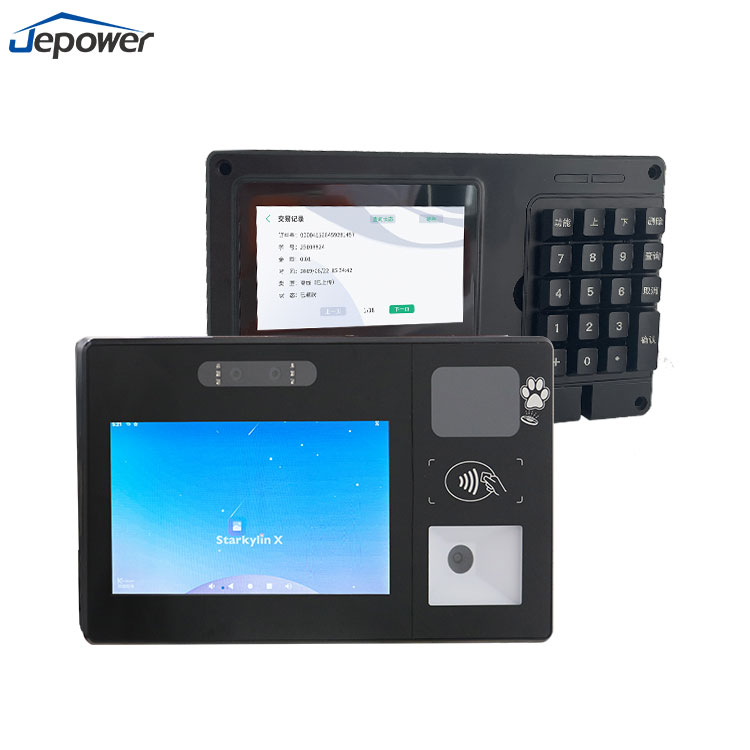
Palm Payment Machines: Advanced Biometrics with Palm Vein Scanners and Readers In the rapidly evolving world of digital payments, biometric technologies are leading the way in enhancing security and user convenience. Among these innovations, palm vein recognition stands out as a cutting-edge solution, combining precision, hygiene, and ease of use. Palm payment machines, equipped with advanced palm vein scanners and readers, are revolutionizing how businesses and consumers interact in retail, hospitality, and other industries. Jepower Technology is at the forefront of this transformation, offering state-of-the-art solutions that integrate this groundbreaking technology. What Is Palm Vein Recognition? Palm vein recognition is a biometric authentication method that uses infrared light to capture the unique vein patterns within a person’s palm. These patterns are highly individual, even among identical twins, making them one of the most secure biometric identifiers. Unlike fingerprints, palm vein recognition is touchless, minimizing contamination risks and ensuring a hygienic user experience. Features of Palm Payment Machines Palm payment machines integrate palm vein recognition technology with advanced payment processing capabilities. Here are the key features: Biometric Security: The built-in palm vein scanner ensures that only authorized individuals can authenticate payments, reducing fraud risks. Touchless Operation: Users simply hover their hand over the reader, providing a seamless and hygienic transaction process. Fast and Accurate Recognition: High-speed processing and precise vein pattern matching ensure quick and reliable authentication. Versatile Payment Options: These machines often support multiple payment methods, including QR codes, NFC, and traditional card payments. Jepower Technology’s palm payment machines excel in these features, delivering a superior user experience tailored to modern business needs. Applications of Palm Vein Readers Palm vein readers are not limited to payment systems. Their applications extend to: Retail and Restaurants: For fast and secure checkouts. Healthcare: For patient identification and secure access to medical records. Banking: For ATM access and account verification. Access Control: In offices and high-security areas to manage entry permissions. Jepower Technology’s innovative solutions are designed to cater to these diverse application scenarios, ensuring reliability and efficiency across industries. Benefits of Palm Vein Technology Enhanced Security: The uniqueness of vein patterns makes it nearly impossible to replicate, providing robust protection against identity theft. Hygiene and Convenience: The touchless nature of the technology aligns with modern health and safety standards, especially in the post-pandemic era. User-Friendly: Simple hand gestures make the system accessible to users of all ages and abilities. Future of Palm Payment Machines As the demand for secure and convenient payment metho...

Palm vein scanning is a cutting-edge biometric authentication method used in Jepower's devices, like the P3P, to enhance security and streamline identification processes. This technology uses near-infrared light to capture the unique vein pattern within a person’s palm. Because vein patterns are internal, they are highly secure, challenging to replicate, and remain consistent throughout a person’s life, making palm vein scanning a highly reliable authentication method. How It Works Light Emission: The device emits near-infrared light, which is absorbed differently by deoxygenated blood in the veins than by surrounding tissue. Vein Pattern Capture: The camera within the scanner captures an image of the vein pattern, which appears darker due to the blood's absorption of the light. Pattern Analysis: The captured image is converted into a digital template that uniquely represents the user's vein structure. Authentication: This template is compared with stored templates to verify identity. Benefits of Palm Vein Scanning High Security: Vein patterns are difficult to copy, providing a high level of security. Non-Intrusive: Users only need to hover their hand over the scanner. Hygienic: As it’s a contactless process, it’s a more sanitary option compared to other biometric methods like fingerprint scanning. Applications Jepower’s palm vein scanning is suited for retail environments, workplaces, and high-security zones, where it enables quick, accurate, and secure identification. It can be particularly useful in scenarios requiring frequent identification, like employee check-ins or customer verification in secure retail transactions.

Jepower Technology's TX100W Palm Vein Canteen Payment Machine Implementation in the Greater Bay Area: A Successful Case Study Jepower Technology’s TX100W palm vein canteen payment machine has successfully been implemented at an enterprise in the Greater Bay Area, showcasing its advantages in smart canteen management. Equipped with advanced palm vein recognition technology, the device provides a more convenient, secure, and efficient payment experience for the company. Highlights of the Case Contactless Payment Experience: Utilizing palm vein recognition technology, employees can complete their payments simply by placing their hand near the recognition area, eliminating the need for cards or mobile devices. This contactless payment method is ideal for canteen environments that prioritize hygiene and efficiency. Data Management and Precision Analysis: The device records every transaction in real-time and automatically generates statistical analysis, making it easier for management to monitor canteen operations. The support of big data enables the company to optimize food procurement and cost control. Intelligent and Convenient Management: The TX100W seamlessly integrates with the company’s existing management systems, offering multiple functions such as consumption records, balance inquiries, and spending limits, providing a more convenient management approach for canteen administrators. High Security and Anti-Fraud Measures: Palm vein recognition technology is more difficult to replicate than traditional fingerprint or card systems, effectively preventing issues like unauthorized usage and ensuring secure payments. In this case, the TX100W has provided an efficient canteen management solution that improves the dining experience for employees and enhances operational efficiency, making it a leading application case in the smart canteen sector of the Greater Bay Area.
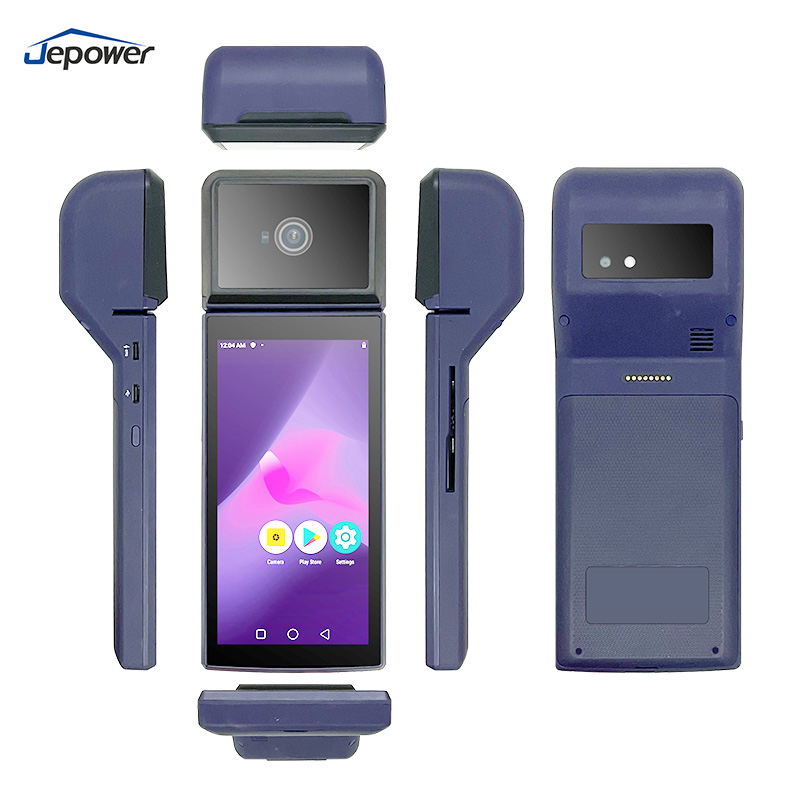
In today’s fast-paced world, businesses in retail and hospitality are increasingly turning to mobile solutions to enhance their customer experience and streamline operations. One such revolutionary tool is the PALM POS handheld device. These portable point-of-sale systems are designed to meet the evolving needs of modern businesses, allowing for faster, more efficient, and flexible transactions, all from the palm of your hand. What is PALM POS Handheld? The PALM POS handheld device is a compact, mobile version of a traditional point-of-sale system. It combines all the essential functions of a POS terminal—inventory management, sales processing, and payment acceptance—with the convenience of mobility. This system is ideal for restaurants, retail stores, and other businesses that require flexibility and on-the-go service, enabling staff to complete transactions anywhere within the premises. Key Features of PALM POS Handheld Portability and Mobility Unlike traditional POS systems confined to the checkout counter, PALM POS handheld devices empower your team to move freely throughout your store or restaurant. This means employees can assist customers, check inventory, and complete sales from anywhere, whether on the shop floor or at a customer's table. Multi-Payment Support PALM POS handheld supports multiple payment methods, including credit and debit cards, mobile wallets, and contactless payments such as NFC and QR code scanning. This ensures that customers have the flexibility to pay using their preferred method, improving satisfaction and reducing transaction times. Cloud-Based System Integration Many PALM POS handheld systems integrate with cloud-based software, allowing real-time data syncing. This feature ensures that all sales and inventory data are up-to-date and accessible remotely, offering business owners better control and insights, no matter where they are. User-Friendly Interface The handheld device typically comes with a touchscreen interface that is intuitive and easy to use, reducing the need for extensive employee training. Customizable software options also enable businesses to tailor the POS system to their specific operational needs. Robust Security PALM POS handheld devices are built with security in mind. Encryption and secure authentication protocols ensure that customer and business data remain protected, especially during payment transactions. Advantages of Using PALM POS Handheld Improved Customer Experience In restaurants, servers can take orders and accept payments right at the table, minimizing wait times and enhancing customer service. In retail environments, employees can check out customers directly from the sales floor, avoiding long lines at the register and boosting overall customer satisfaction. Increased Efficiency The ability to process transactions and update inventory in real-time allows businesses to operate more efficiently. Employees spend less time going back and forth between the customer and the checkou...
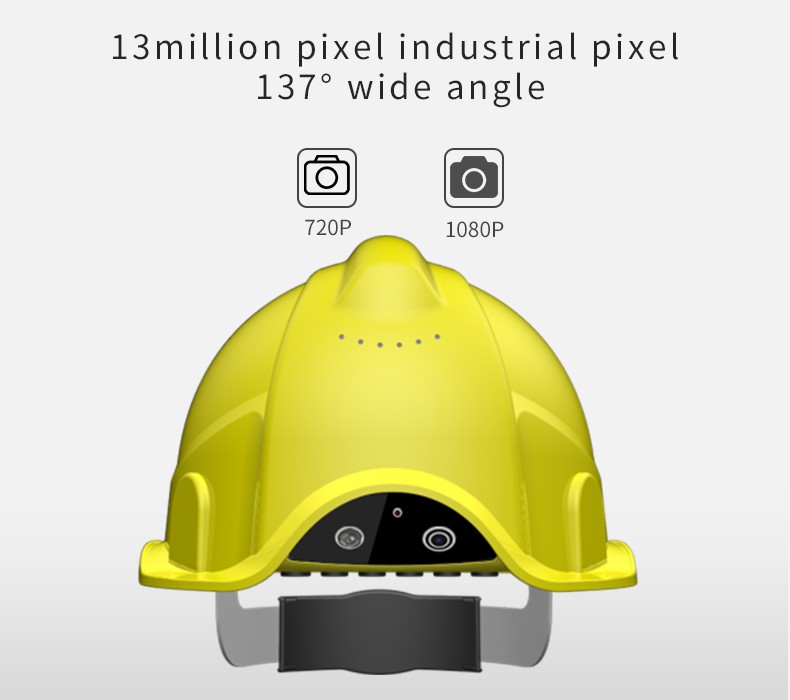
The jepower Smart Safety Helmet is an innovative safety protection product that integrates multiple intelligent technologies and features, providing comprehensive safety assurance for users. The jepower Smart Safety Helmet includes real-time video, voice intercom, high-definition recording, precise positioning, integration with command and dispatch platforms, AI intelligent behavior analysis, and various other functions, making it suitable for a wide range of applications. Construction Sites: On construction sites, the jepower Smart Safety Helmet enables real-time video monitoring of the construction site, recording the construction process to ensure safety and quality. The voice intercom function facilitates real-time communication among construction site personnel for coordination and guidance. The helmet can monitor workers' heart rates and employ AI intelligent behavior analysis to identify various actions, issuing timely warnings to reduce accidents. Industrial Manufacturing: In the industrial manufacturing sector, the jepower Smart Safety Helmet provides high-definition recording functionality to monitor the operation and processes of production lines, facilitating timely issue detection and resolution. The built-in supplementary lighting function ensures ample light in low-light environments, ensuring clear visibility for workers. Logistics and Warehousing: In the logistics and warehousing industry, the helmet interfaces with command and dispatch platforms, enabling real-time monitoring and management of logistics vehicles and goods. The 4G full-network connectivity ensures rapid and stable information transmission, facilitating remote dispatching and tracking by logistics management personnel. Mining Industry: In mining operations, the jepower Smart Safety Helmet offers real-time video monitoring and voice intercom functions for continuous monitoring and guidance of miners, ensuring work safety and efficiency. The AI intelligent behavior analysis can identify hazardous actions, issuing warnings to reduce accident risks. Public Safety: In the realm of public safety, the helmet provides real-time video monitoring and voice intercom functions, assisting law enforcement officers in safe patrols and operations. The AI intelligent behavior analysis can recognize abnormal activities, issuing early warnings and prompting appropriate actions. Specialized Operations: In special work scenarios such as high-altitude operations, the jepower Smart Safety Helmet provides features like positioning, communication, and alerts to ensure the safety of operational personnel. In summary, the jepower Smart Safety Helmet has a wide range of applications, covering construction sites, industrial manufacturing, logistics and warehousing, the mining industry, public safety, and specialized operations. Through a combination of hardware and software technologies, including AI intelligent behavior analysis, it provides comprehensive safety assurance and management for ...
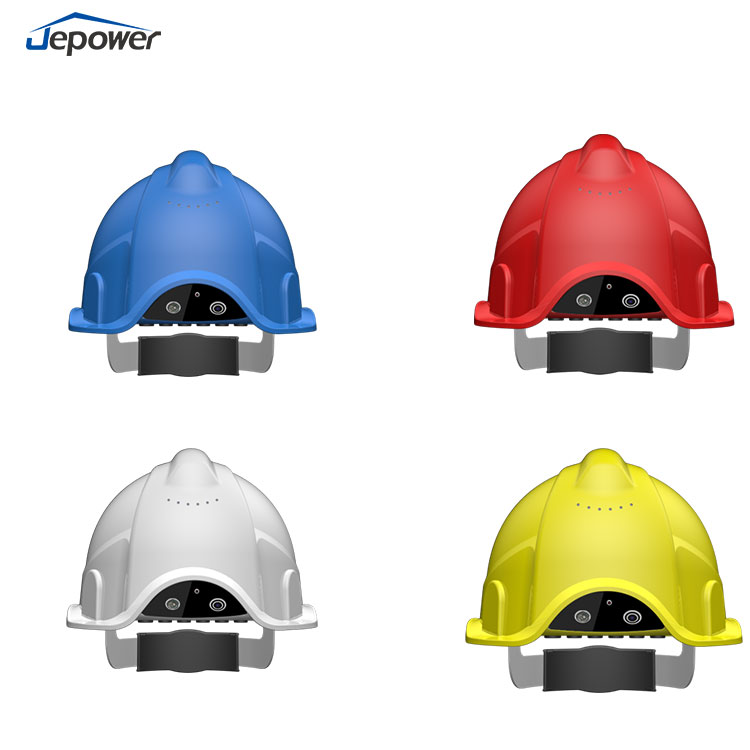
Smart safety helmet is an innovative product that combines advanced technology. Through built-in sensors and intelligent algorithms, it can monitor and analyze the wearer's head condition in real-time, effectively providing safety protection. This article will provide an in-depth analysis of the functions, technologies, and applications of smart safety helmets, and explore their future development trends. Firstly, smart helmets have multiple functions aimed at improving the safety and comfort of users. It can detect the wearer's head posture in real-time, remind the wearer to maintain the correct posture, and prevent accidental injuries caused by improper wearing. At the same time, it can also monitor the wearer's physiological parameters such as body temperature and heart rate, issue alerts in a timely manner, and notify relevant personnel to ensure the wearer's health and safety. Secondly, the smart safety helmet adopts advanced sensing technology and intelligent algorithms, providing users with precise monitoring and analysis. Through built-in sensors such as accelerometers, gyroscopes, and barometers, smart helmets can accurately obtain the movement status and environmental information of the wearer's head. By connecting with smartphones or other terminal devices, smart helmets can achieve remote monitoring and data transmission, providing users with more convenient and efficient services. In addition, the application fields of smart helmets are very extensive. Firstly, in the field of industrial production, smart safety helmets can help workers prevent and reduce injuries caused by work errors or accidents. Secondly, in the field of construction, smart safety helmets can monitor the labor intensity and fatigue level of workers, remind them to rest in a timely manner, and protect their physical health. In addition, smart safety helmets can also be widely used in fields such as energy, electricity, roads and bridges, petroleum and petrochemicals, sports, tourism, and military, providing more accurate and reliable safety guarantees for relevant personnel. With the continuous progress of technology and the continuous innovation of smart helmets, their future development prospects are very broad. Firstly, smart helmets can further improve the accuracy and precision of monitoring. Through more advanced sensing technology and more intelligent algorithms, more comprehensive and accurate monitoring of the wearer's head condition can be achieved. Secondly, smart helmets can achieve interconnectivity with other smart devices, forming a more intelligent security system and providing more comprehensive and comprehensive security protection. In addition, smart helmets can also combine virtual reality and augmented reality technologies to provide users with a more immersive security experience. In short, the smart safety helmet is an innovative product that combines advanced technology. Through built-in sensors and intelligent algorithms, it can monitor an...
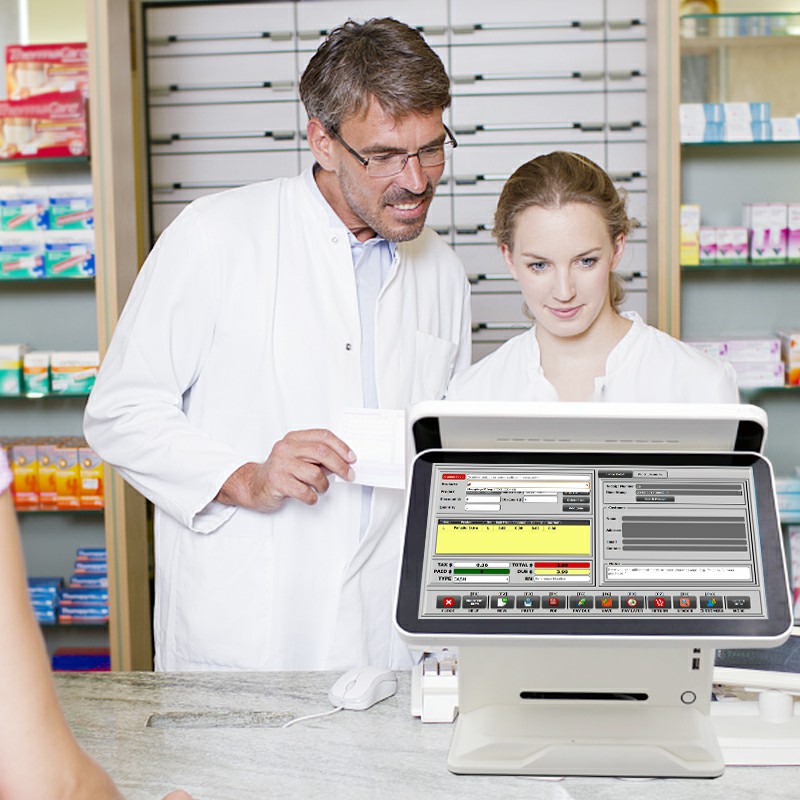
Integrating Future Technology, A New Era from Android Cashier to AI Integrated Weighing Machine In the business field, the continuous development of technology is driving the transformation of our daily operations. The latest trend indicates that Android cash registers are gradually evolving into integrated weighing machines with artificial intelligence, bringing a smarter and more efficient checkout experience to the retail industry. Intelligent technology integration In the past, Android cash registers were mainly used for simple transaction processing, but with the continuous advancement of artificial intelligence technology, these devices have become more intelligent and powerful. Nowadays, combining advanced technologies such as computer vision, deep learning, and big data analysis, Android cash registers are no longer just simple cash register devices, but have become intelligent tools that can understand, learn, and adapt to the business environment. Integration of weighing function The new generation of Android AI integrated weighing machines integrates weighing functions, bringing a new experience to the retail industry. These devices are no longer limited to traditional QR code scanning and price input. They achieve real-time weighing through built-in weighing sensors, providing a more accurate and efficient way for product settlement. This not only improves the accuracy of settlement, but also simplifies the entire shopping process, saving time and energy for customers and merchants. Real time data analysis and intelligent prediction With the introduction of AI, these devices can not only process transactions, but also analyze sales data in real-time. By delving deeper into purchasing behavior and trends, businesses can better understand customer needs, develop more effective promotional strategies and inventory management plans. The intelligent prediction function enables businesses to better respond to market changes, make decisions in advance, and maintain a competitive advantage.
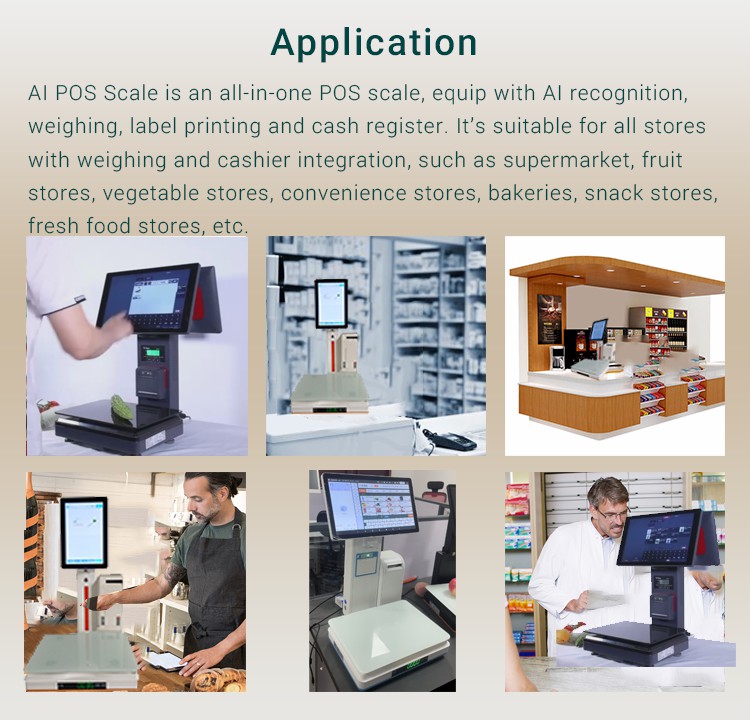
In the age of rapid technological advancement, artificial intelligence is gradually infiltrating our daily lives. In the retail sector, AI Cashier-Integrated Weighing Scales are emerging as a game-changer, often dubbed as the future of retail. This article delves into the concept, advantages, and impact of AI Cashier-Integrated Weighing Scales on the retail industry. AI Cashier-Integrated Weighing Scales: Concept and Working Principle AI Cashier-Integrated Weighing Scales represent an innovative fusion of artificial intelligence and measurement technology. Their operation is rooted in highly intelligent image recognition and computation, enabling them to automatically identify and calculate the prices, quantities, and weights of products, effectively replacing traditional cashiers. This technology encompasses several key components: Image Recognition: AI Cashier-Integrated Weighing Scales employ cameras and image recognition algorithms to accurately identify product appearances, barcodes, or RFID tags. Measurement Technology: Through weighing or volume measurement, these scales precisely calculate product prices, quantities, and weights. Artificial Intelligence: Leveraging deep learning and machine learning algorithms, AI Cashier-Integrated Weighing Scales continuously improve their performance, adapting to various products and shopping scenarios. Advantages of AI Cashier-Integrated Weighing Scales The advent of AI Cashier-Integrated Weighing Scales offers multiple benefits, not only to retailers but also in enhancing the shopping experience for customers: Enhanced Efficiency: The automated checkout process significantly accelerates transaction speed, reduces waiting times, and shortens queues. Reduced Error Rates: The accuracy of AI Cashier-Integrated Weighing Scales is virtually unparalleled, minimizing costs associated with human errors. Real-Time Data: These systems can track inventory in real-time, providing sales trends and data to help retailers better manage their stock. Improved Customer Satisfaction: Reduced wait times and queue lengths enhance the shopping experience, delivering greater convenience to customers. Impact of AI Cashier-Integrated Weighing Scales on the Retail Industry AI Cashier-Integrated Weighing Scales have already had a profound impact on the retail industry, and these effects are expected to grow in the future: Transformation and Automation: Retailers are gradually shifting towards automated cashier systems, reducing labor costs and improving profitability. Data-Driven Decision-Making: The data provided by AI Cashier-Integrated Weighing Scales enables retailers to gain a better understanding of customer demands, enhancing inventory management and sales strategies. Retail Experience Upgrade: AI Cashier-Integrated Weighing Scales improve the shopping experience, making customers more inclined to patronize these retail stores. Future Potential: As technology continues to advance, the capabilities of AI Cashier-Integrate...
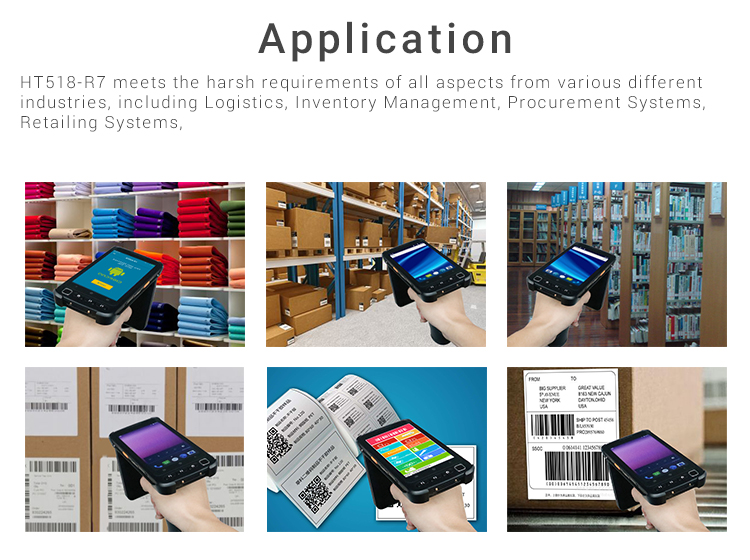
Handheld UHF RFID PDAs is likely referring to a handheld device designed for communication and data collection with Ultra High-Frequency (UHF) Radio-Frequency Identification (RFID) tags. These devices are commonly used in applications such as inventory management, logistics, warehouse management, retail, manufacturing, and other industries. Here is some common information about handheld UHF RFID PDAs: Functionality: Handheld UHF RFID PDAs typically have RFID reading capabilities for scanning and identifying UHF RFID tags. They may also include barcode scanning, WiFi connectivity, Bluetooth, GPS, and other communication and data collection features. Applications: These devices are widely used in fields like inventory management, asset tracking, logistics and supply chain management, retail inventory control, production line control, and more. They are used for tracking items, recording inventory, and enhancing supply chain visibility. Operating System: Handheld UHF RFID PDAs typically run on operating systems such as Windows Mobile, Android, or other custom operating systems that support RFID reading and data collection applications. Hardware Features: These devices often come with durable casings to withstand daily use, impacts, and environmental factors. They also feature large screens, keyboards, or touchscreens for data input and interaction with applications. Battery Life: Since these devices are typically used throughout the day, they usually have long battery life to ensure continuous operation. Connectivity: They typically offer various connectivity options, including WiFi, Bluetooth, USB, etc., for data transfer and connecting to other devices. Software Support: Handheld UHF RFID PDAs are usually equipped with specialized RFID reading and data collection software to meet different application needs. Functionality: Handheld UHF RFID PDAs typically have RFID reading capabilities for scanning and identifying UHF RFID tags. They may also include barcode scanning, WiFi connectivity, Bluetooth, GPS, and other communication and data collection features. Applications: These devices are widely used in fields like inventory management, asset tracking, logistics and supply chain management, retail inventory control, production line control, and more. They are used for tracking items, recording inventory, and enhancing supply chain visibility. Operating System: Handheld UHF RFID PDAs typically run on operating systems such as Windows Mobile, Android, or other custom operating systems that support RFID reading and data collection applications. Hardware Features: These devices often come with durable casings to withstand daily use, impacts, and environmental factors. They also feature large screens, keyboards, or touchscreens for data input and interaction with applications. Battery Life: Since these devices are typically used throughout the day, they usually have long battery life to ensure continuous operation. Connectivity: They typically offer vari...
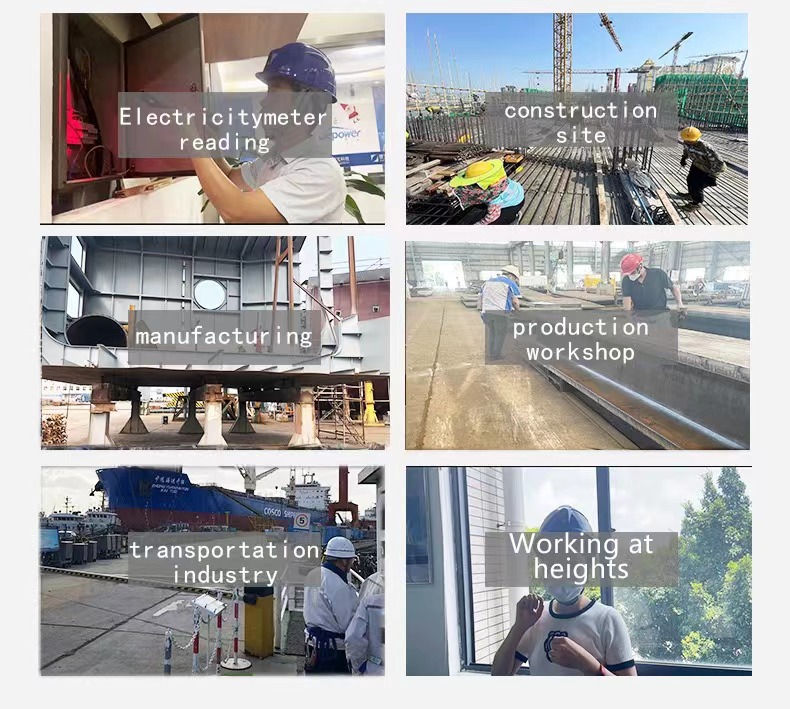
The features and characteristics of smart safety helmets are truly impressive, including: 2. Application Scenarios Construction Sites: In high-altitude work, heavy machinery operations, and construction projects, smart safety helmets can monitor worker activities and environmental conditions, enhancing worker safety. Manufacturing Industries: On manufacturing assembly lines, smart safety helmets can track worker locations, assist in task allocation and management. Mining Industry: In hazardous underground environments, smart safety helmets can detect toxic gas leaks and collapse risks, serving as a lifeline for workers. Emergency Rescue: In catastrophic events such as earthquakes or fires, smart safety helmets can quickly locate trapped individuals, expediting rescue efforts. Smart safety helmets not only provide basic head protection but also integrate advanced technology to elevate industrial safety standards. Their features and characteristics make workers safer and more efficient, providing reliable protection and support for workers on construction sites and in other hazardous environments. As a key tool in the future of the industrial sector, smart safety helmets are continuously evolving, creating a more dependable future for work safety and productivity. #
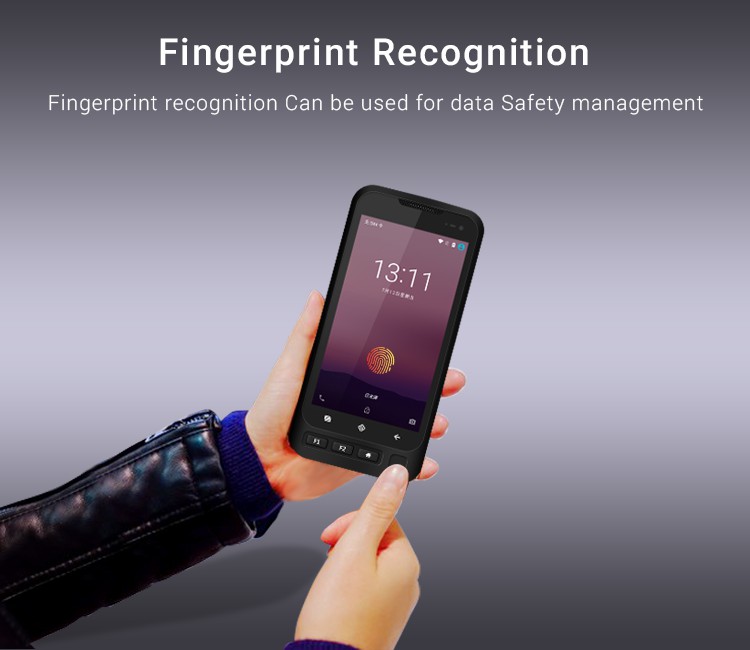
Gas is an indispensable energy source in our daily lives, and how to better manage and utilize gas resources, improve efficiency, and ensure safety has become our continuous pursuit. Guided by technology, we are introducing a revolutionary jepower handheld PDA application that makes gas management smarter, more convenient, and efficient! Key features of the jepower handheld PDA include: Intelligent Monitoring: Through smart sensor and device integration, the Smart Gas Manager can monitor your home's gas supply in real-time, including pressure, flow, and other parameters, ensuring you always have insights into the gas system's operation. Safety Alerts: Gas leaks can be extremely hazardous, so our application is equipped with sensitive leak detection. Once a gas leak is detected, the system will immediately send alerts to you and swiftly cut off the gas supply, ensuring the safety of you and your family. Smart Controls: No more manual adjustments of gas switches; the Smart Gas Manager allows you to remotely control gas supply through a smartphone app, providing convenient access anytime, anywhere. Energy Analysis: The built-in data analysis function helps you understand gas consumption patterns and trends, enabling you to plan gas usage more efficiently and save on energy costs. Scheduled Maintenance: The Smart Gas PDA will set reminders for regular gas equipment maintenance, preventing you from forgetting and extending the lifespan of your devices while reducing the risk of malfunctions. Bill Management: You can conveniently check and manage gas expenses through the app, supporting online payments and bidding farewell to cumbersome paper bills, making your payment process simple and fast. jepower handheld PDA is committed to integrating technology into the gas industry, creating an intelligent, efficient, and secure gas management experience for you. Let us stride into a new era of intelligence, using technology to transform lives and wisdom to protect our homes.
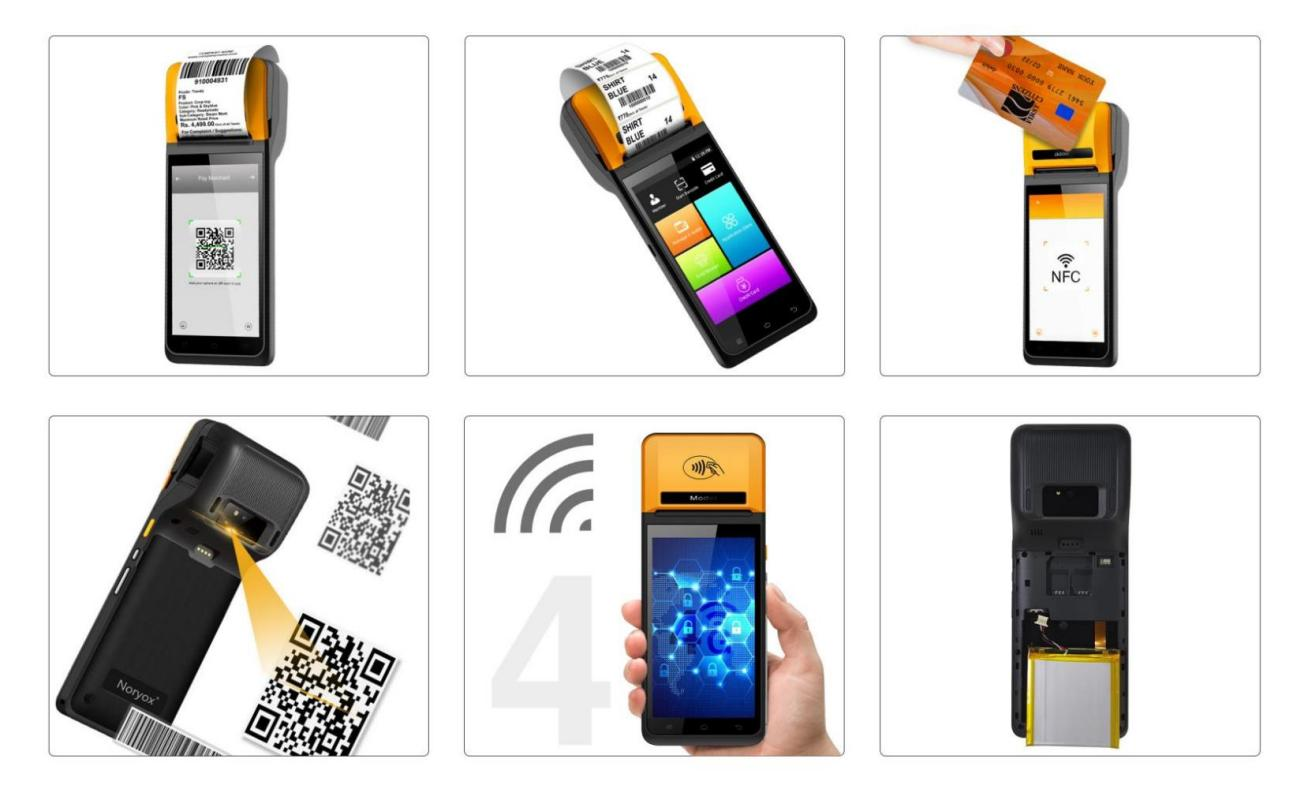
In the ever-evolving world of retail, technology continues to shape the way businesses conduct transactions and interact with customers. Among the latest innovations in this domain is the Jepower Handheld POS Machine, a cutting-edge solution that promises to transform the way businesses handle payments and streamline their operations. In this article, we'll explore the features, benefits, and potential impact of this revolutionary device on the retail industry. I. The Jepower Handheld POS Machine: A Glimpse into the Future of Transactions II. Key Features and Functionality III. Advantages for Businesses IV. Impact on the Retail Landscape Smoother Transactions: The era of waiting in long lines at the cashier may soon become a thing of the past, with handheld POS machines speeding up transactions and reducing customer frustration. Data-Driven Retailing: Retailers armed with valuable sales and customer data can make informed decisions to optimize their product offerings and marketing strategies, creating a more personalized shopping experience for consumers. Emphasis on Customer Engagement: The newfound mobility of sales associates will allow them to focus on providing exemplary customer service, fostering deeper connections with shoppers and cultivating brand loyalty. The Jepower Handheld POS Machine holds the potential to redefine the retail industry, placing the power of seamless transactions and data-driven decision-making in the palm of merchants' hands. As this technology gains wider adoption, retailers can look forward to improved efficiency, enhanced customer experiences, and a stronger competitive edge. Embracing this innovative device may very well pave the way for the future of retail as we know it.
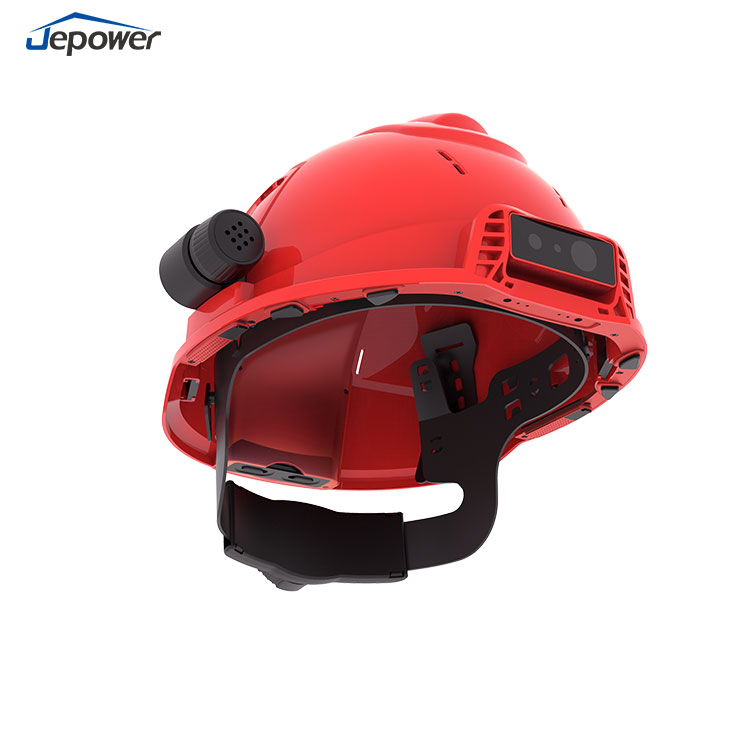
Part 1: Features of the Intelligent Safety Helmet Part 2: Specific Application Environments of the Intelligent Safety Helmet Conclusion: The intelligent safety helmet, with its multi-functional sensors, real-time monitoring and feedback, positioning and navigation capabilities, and data recording and analysis, is finding extensive applications in various industries. Its emergence provides innovative solutions for protecting worker safety and enhancing workplace security and efficiency. With further technological advancements and innovations, the intelligent safety helmet is poised to play an even more crucial role in the future.
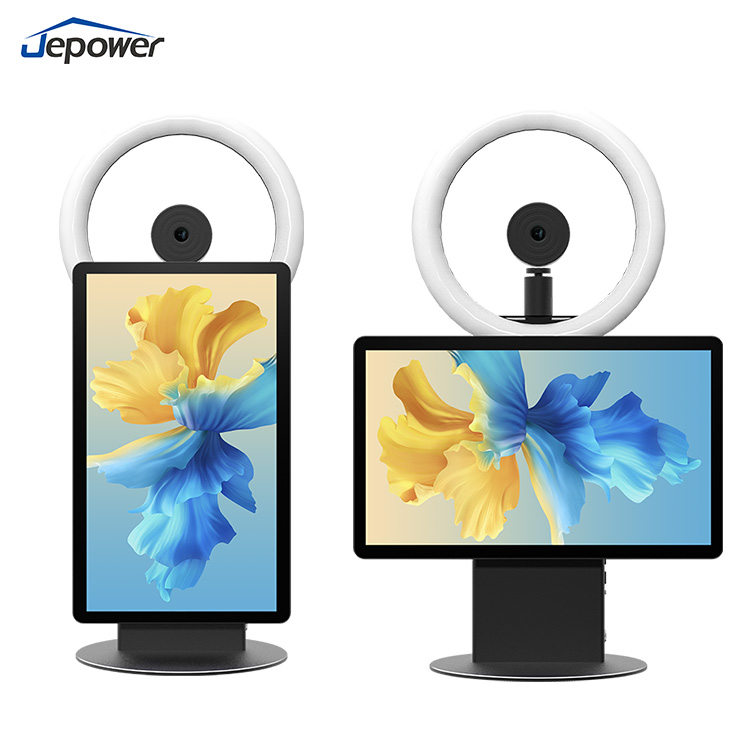
Introduction: Live streaming has become a popular trend in the internet era, and the emergence of live streaming all-in-one devices is revolutionizing the way we approach live broadcasting. With their unique advantages and convenience, these devices are leading us into a new era of live streaming. This article will explore the features, advantages, and positive impact of live streaming all-in-one devices on the live streaming industry. Part 1: Definition and Features of Live Streaming All-in-One Devices Live streaming all-in-one devices are devices that integrate multiple live streaming functions, including high-definition cameras, intelligent beauty filters, real-time interactive comments, and more. Compared to traditional live streaming methods, these devices simplify the operational workflow for streamers, thereby improving the efficiency and quality of live broadcasts. Part 2: Advantages and Value of Live Streaming All-in-One Devices Multifunctionality: The greatest advantage of live streaming all-in-one devices lies in their multifunctionality. These devices not only offer high-definition video quality and stable connections but also provide features such as automatic beauty filters and real-time interactive comments, enabling streamers to create richer and more engaging live content. User-Friendly: Live streaming all-in-one devices are designed to be user-friendly, requiring no complex setup or connection procedures. Streamers can start their broadcasts with just a few simple steps, saving them from the hassle of lengthy preparations and allowing them to focus more on content creation and presentation. Enhanced Streaming Quality: Live streaming all-in-one devices utilize advanced camera technology, delivering high-definition video quality and capturing intricate details, providing viewers with a more immersive viewing experience. The stable network connectivity ensures uninterrupted live streaming, eliminating buffering and interruptions. Portability: Live streaming all-in-one devices are compact and lightweight, making them highly portable. Streamers can easily carry these devices and go live anytime and anywhere, expanding their broadcasting opportunities and reaching a broader audience. Enhanced Interactive Experience: Live streaming all-in-one devices support real-time interactive comments and multi-screen switching, enhancing viewer engagement and interactivity. Streamers can interact with their audience in real-time, fostering stronger connections and increasing the appeal of their live streams. Part 3: Impact of Live Streaming All-in-One Devices on the Live Streaming Industry The emergence of live streaming all-in-one devices has had a positive impact on the live streaming industry. These devices elevate the quality and efficiency of live streaming, allowing streamers to focus on creating captivating content that attracts more viewers and encourages greater participation. Additionally, the convenience and portability of live streamin...
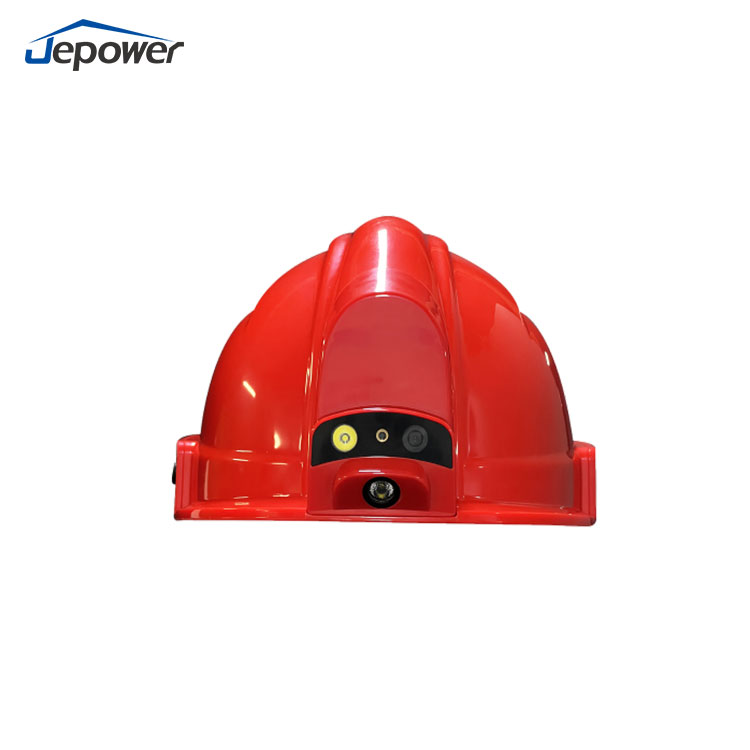
Smart safety helmets in smart construction sites can solve various problems. Here are some common problems and the application of smart safety helmets: Worker safety monitoring: Smart safety helmets are equipped with various sensors and cameras to monitor the safety status of workers in real time. For example, the built-in heart rate sensor can monitor changes in the workers' heart rate, and if the heart rate is abnormal or too high, the system can automatically issue an alert. Cameras can be used to detect whether workers are wearing other necessary safety equipment, such as safety goggles or earplugs. Fall detection: Smart safety helmets can use built-in accelerometers and gyroscopes to detect if a worker has fallen. If a worker falls, the safety helmet will automatically trigger an alert and send location information to the rescue team for timely assistance. Environmental monitoring: Smart safety helmets can detect environmental conditions in the workplace, such as gas concentration, temperature, and humidity. If the environmental conditions exceed the safe range, the safety helmet can send alerts to workers, reminding them to take necessary measures. Real-time communication and positioning: Smart safety helmets can communicate wirelessly with other devices or smart construction site systems, enabling real-time communication among workers. Additionally, the safety helmet can use GPS or other positioning technologies to track the location of workers for accurate positioning and emergency rescue when needed. Data recording and analysis: Smart safety helmets can record workers' activity data, such as working hours, work locations, and work intensity. These data can be used to analyze work processes, evaluate work efficiency, and improve working conditions. In summary, the application of smart safety helmets in smart construction sites can enhance worker safety, monitor and respond to potential hazards in real time, and provide valuable data on work environments and worker activities to the management team. These functionalities contribute to reducing accident risks, improving overall safety, and enhancing efficiency on construction sites.
1
22
pagesCopyright © 2015-2025 GuangZhou Jepower Technology Co.,Ltd.All Rights Reserved.
Friendly Links :
Android Pos Terminal